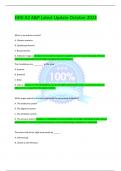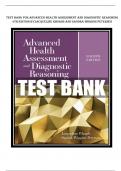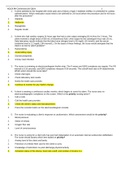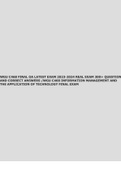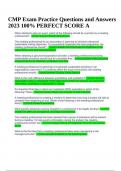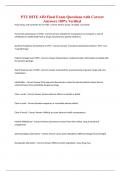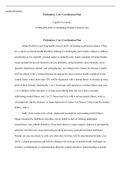Exam (elaborations)
HESI A2 A&P Latest Update October 2024 Which is an anterior muscle? A. Gluteus maximus B. Quadriceps femoris C. Biceps femoris D. Adductor magnus - Answer--B. An anterior muscle is located near the front of the body. Of those listed, the quadriceps( front
- Course
- Institution
HESI A2 A&P Latest Update October 2024 Which is an anterior muscle? A. Gluteus maximus B. Quadriceps femoris C. Biceps femoris D. Adductor magnus - Answer--B. An anterior muscle is located near the front of the body. Of those listed, the quadriceps( frontal thigh muscle) is the most anterior. ...
[Show more]
